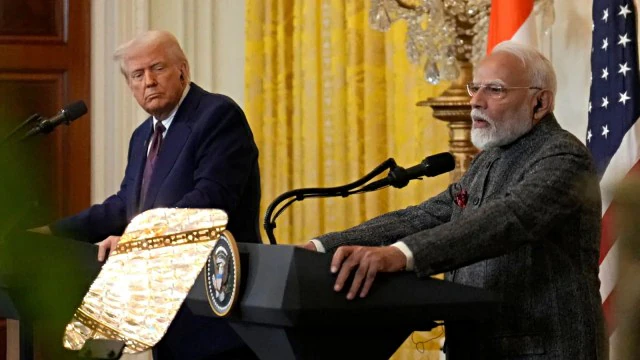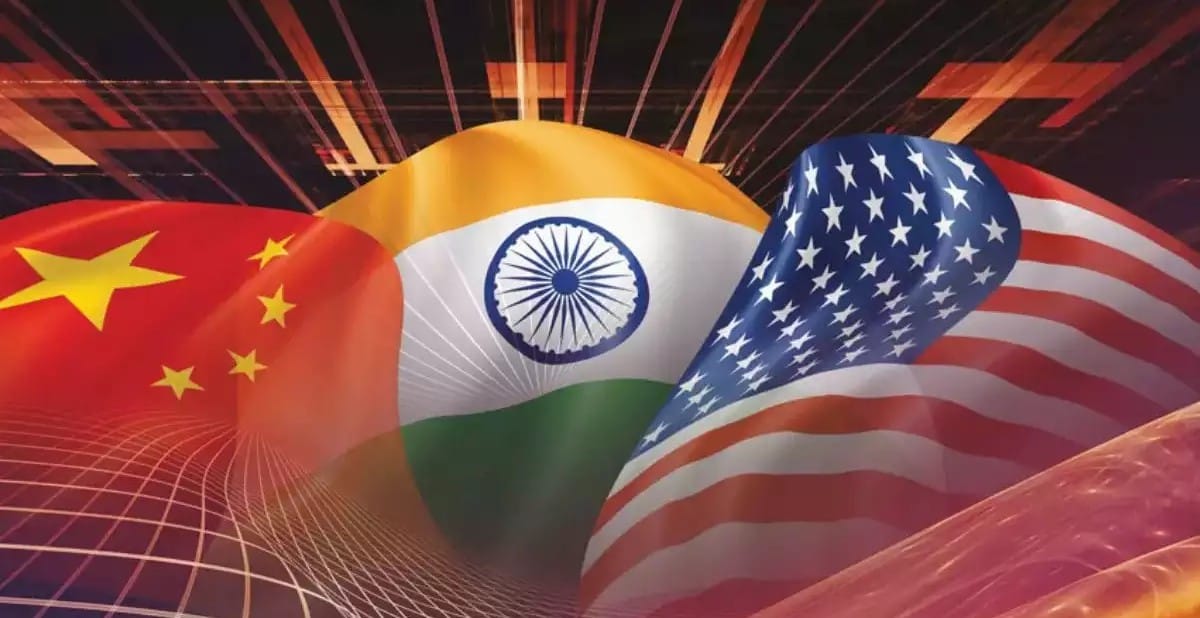
Washington/New Delhi: In a move that has raised eyebrows in diplomatic and trade circles, the United States has, for the first time, placed India on the same level as China in connection with the global fentanyl crisis. The latest ‘2025 Annual Threat Assessment (ATA),’ released on Tuesday, identifies both countries as “state actors” involved in the supply of precursor chemicals and equipment used by drug traffickers, particularly for the production of illicit fentanyl.
The report comes at a critical time, with just a week left before the Donald Trump administration’s proposed retaliatory tariffs are set to take effect. The assessment by the US intelligence community highlights the growing role of China and India in fueling the fentanyl epidemic, which continues to claim thousands of lives across the United States.
India, China Identified in US Drug Trafficking Report
According to the intelligence assessment, synthetic opioids like fentanyl remain the deadliest category of drugs smuggled into the US, contributing to over 52,000 deaths in the 12-month period ending October 2024. The report underscores that while Mexican transnational criminal organizations (TCOs), including the Sinaloa Cartel and the Jalisco New Generation Cartel, dominate fentanyl production and distribution, their supply chains rely heavily on precursor chemicals and equipment sourced from India and China.
“Non-state groups are often enabled, both directly and indirectly, by state actors, such as China and India, as sources of precursors and equipment for drug traffickers. China remains the primary source country for illicit fentanyl precursor chemicals and pill pressing equipment, followed by India,” states the assessment, published by the office of Tulsi Gabbard, the US Director of National Intelligence (DNI).
India’s Inclusion Sparks Controversy
This marks the first time Washington has officially placed New Delhi in the same category as Beijing regarding fentanyl-related activities. Historically, the US has been vocal about China’s role in fentanyl trafficking, often holding it responsible for the vast supply of synthetic opioid precursors that fuel America’s drug crisis. However, India’s inclusion in the report signals a shift in US scrutiny towards South Asian chemical manufacturers.
The assessment follows a recent high-profile federal case in Washington, D.C., where an India-based chemical manufacturing company and three of its executives were charged with illegally exporting fentanyl precursors. Furthermore, last week, two senior employees of a Hyderabad-based company were arrested in New York City in connection with the case, strengthening allegations that Indian entities are playing an increasing role in the global supply chain of illicit drugs.
Trade and Geopolitical Ramifications
The timing of the report is significant, as it comes amid escalating trade tensions between the US and India. With the Trump administration preparing to impose new tariffs on multiple countries, including India, this development could have far-reaching diplomatic consequences.
In recent years, India has been strengthening its strategic and economic ties with the United States, positioning itself as a key ally in countering China’s dominance in Asia. However, its inclusion in the fentanyl trafficking assessment may create friction between Washington and New Delhi at a time when both nations are navigating complex trade negotiations.
Indian officials have not yet publicly responded to the report, but experts believe New Delhi will push back against the claims, particularly given its strict narcotics control laws and international cooperation efforts in combating drug trafficking.
Beyond Drug Trafficking: US Intelligence Warns of Terrorist Threats
Beyond the concerns over fentanyl, the 2025 ATA report also highlights broader security threats, including the activities of transnational terrorist organizations.
The report identifies ISIS-Khorasan (ISIS-K) as one of the most aggressive branches of ISIS, stating that it will continue seeking to target the West, including the United States, through online radicalization, propaganda, and potential terror plots.
“ISIS’s most aggressive branches, including ISIS-Khorasan, and its entrepreneurial plotters will continue to seek to attack the West, including the United States, via online outreach and propaganda aimed at directing, enabling, or inspiring attacks, and could exploit vulnerable travel routes,” the report states.
In South Asia, the report specifically warns about the growing threat of Tehrik-e-Taliban Pakistan (TTP), which has primarily focused its operations on targeting Pakistan in recent years. However, US intelligence remains concerned about its potential for expanding operations beyond Pakistan, given its historical ties to al-Qaida and past involvement in attacks targeting US interests.
Furthermore, the assessment highlights concerns regarding Lashkar-e-Tayyiba (LeT), an anti-India terrorist group with historical connections to al-Qaida. The report notes that groups like LeT remain a significant concern due to their past activities and potential threats to regional stability.
What Lies Ahead?
The US intelligence assessment on fentanyl trafficking and global threats is likely to trigger a strong reaction from India, which has historically rejected allegations linking it to illicit drug supply chains. While China’s role in fentanyl precursor exports has been widely documented, India’s inclusion in the report marks a notable shift in US policy.
With geopolitical tensions rising and trade negotiations hanging in the balance, this latest development could have a lasting impact on US-India relations. Whether New Delhi will face diplomatic pressure or policy changes from Washington remains to be seen. Meanwhile, the ongoing fentanyl crisis in the US continues to be a critical issue in domestic politics, with policymakers pushing for stricter measures against nations allegedly enabling drug cartels.
As the Trump administration prepares to roll out new tariffs and policies, the global conversation surrounding fentanyl, trade, and security is expected to intensify in the months ahead.


